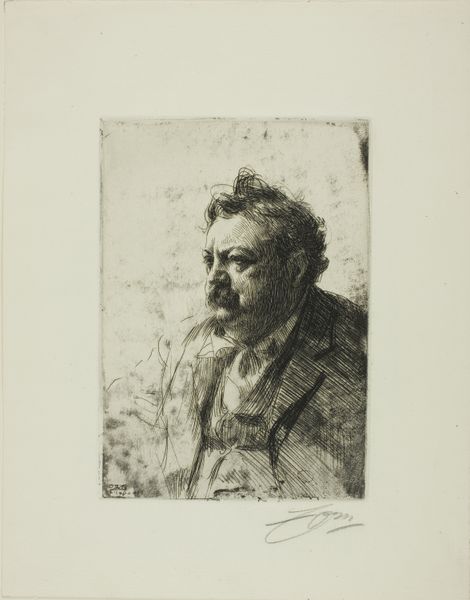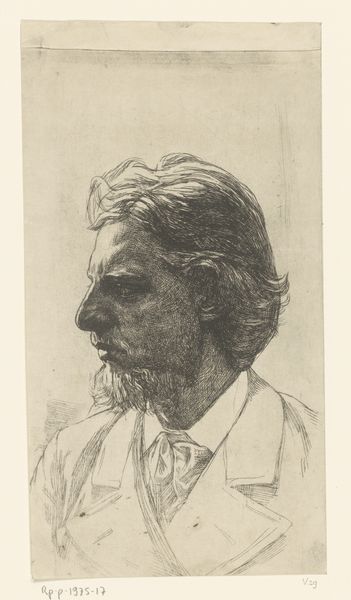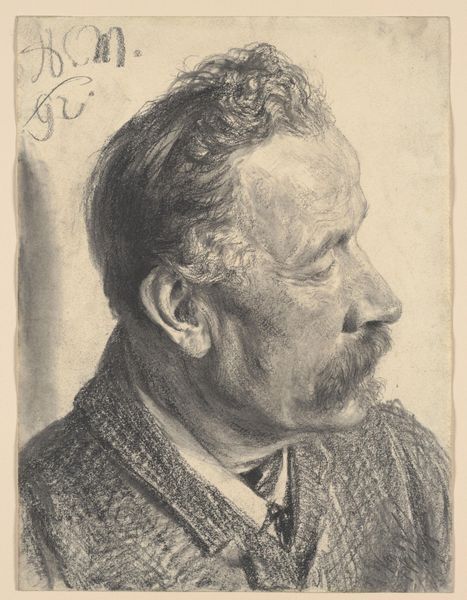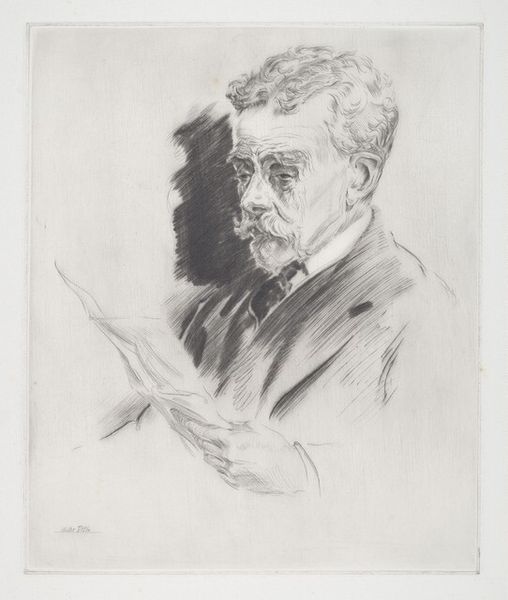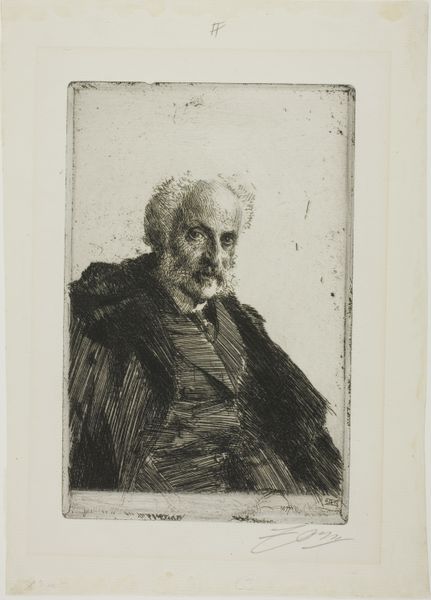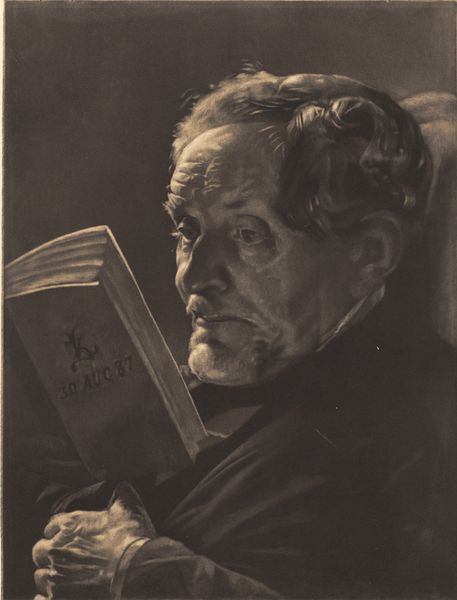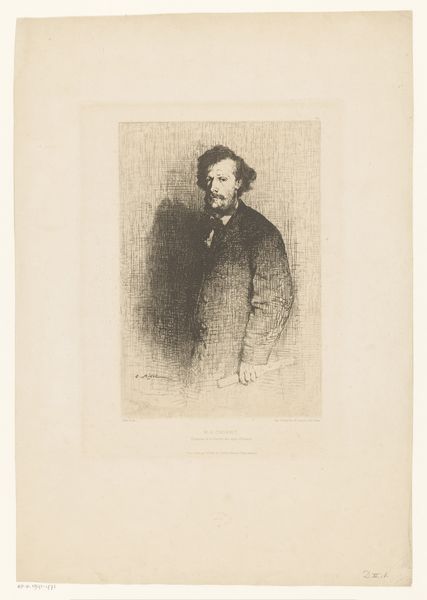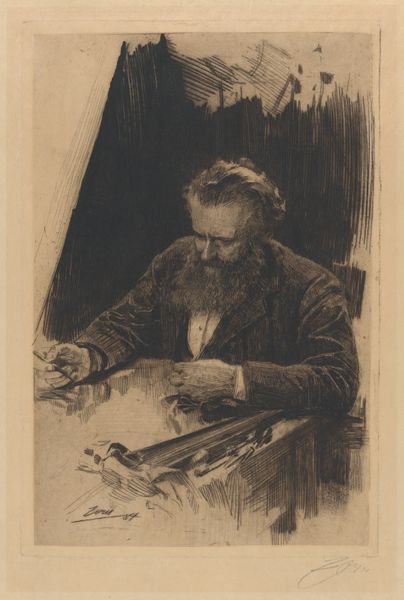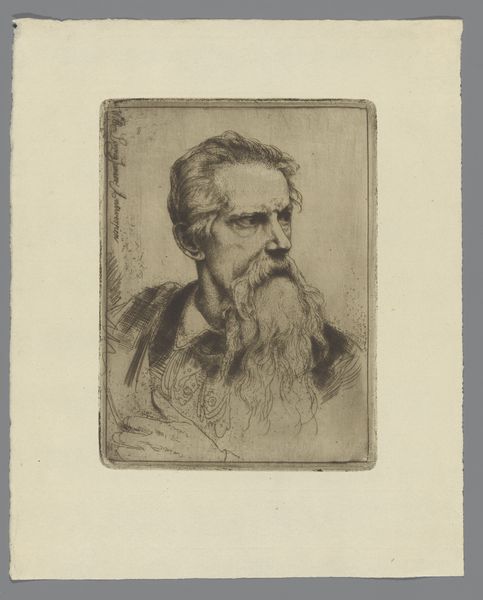
drawing, print, etching
#
portrait
#
pencil drawn
#
drawing
#
art-nouveau
# print
#
etching
#
realism
Dimensions: Plate: 11 3/4 × 7 13/16 in. (29.8 × 19.8 cm) Sheet: 17 15/16 × 13 1/2 in. (45.5 × 34.3 cm)
Copyright: Public Domain
Curator: I’m immediately drawn to the subject’s intense gaze—it's almost confrontational, yet weary. The swirling lines create such a lively effect in a monochrome palette. Editor: Indeed. What we have here is "August Strindberg," an etching by Anders Zorn, completed around 1910. Zorn, as you know, was quite the celebrity portraitist, but what fascinates me is the socio-economic implications of printmaking. This work isn't just about capturing Strindberg’s likeness, but also about the means of disseminating that image to a wider audience, considering the growth of mass media during that time. Curator: That makes me think about Strindberg's own fame—or infamy, depending on your perspective—as a playwright and novelist. Do you think the relative accessibility of etching, compared to, say, oil painting, played into Zorn's choice of medium? Did he want to connect with a public audience eager to see this controversial literary figure? Editor: Absolutely. Zorn was masterful in controlling the different stages of the etching process, like the biting and inking. The layering of those lines give depth and volume, while suggesting the figure's psychological weight. But also let's acknowledge that Strindberg was a deeply problematic figure, especially in his views of women and class. How do we reconcile appreciating the artistry while acknowledging these historical inequalities, visible even within cultural expressions such as his plays? Curator: I appreciate that question. Thinking about the act of portraying someone like Strindberg raises so many crucial considerations. The print media might enable him to be scrutinized closer by wider public. I also find Zorn’s signature etched prominently at the bottom right very bold. Does this insertion indicate the artistic authorship to counter any reproductions? Editor: It signifies artistic presence and control, yes. Ultimately, a piece like this becomes a fascinating cultural artifact, revealing much about the creative and political landscape surrounding both the artist and his subject, but through examination of its production itself. Curator: Well said. It leaves me thinking about how portraits and their materiality, even in etching, continue to shape our perceptions of individuals long after their lifetimes.
Comments
No comments
Be the first to comment and join the conversation on the ultimate creative platform.
